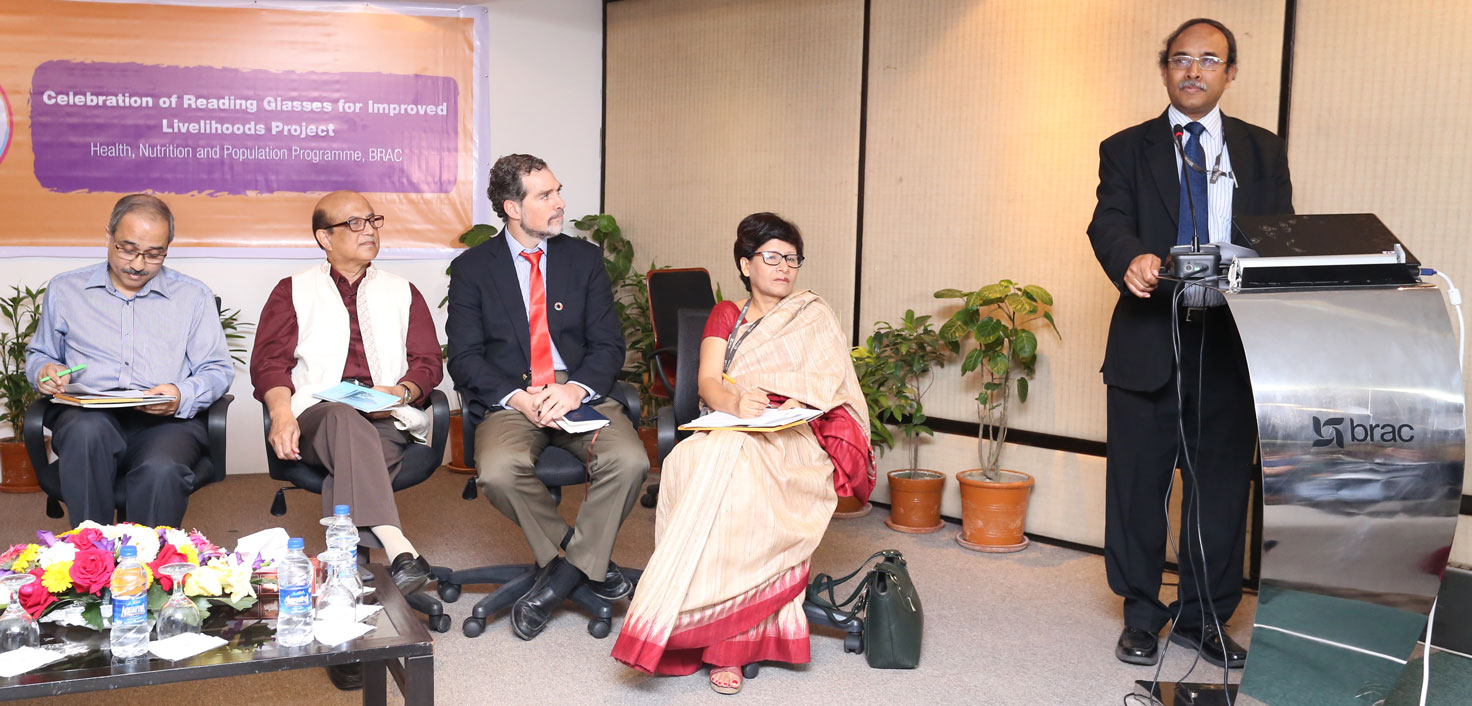NGO Advisor's new annual ranking of the world’s top NGOs yields important and even unexpected insights for the development community. The list — published each year since 2011 — aims to identify the most impactful organizations in the world.
Some top performers are household names; others are little known even within the development community. The ranks can provide outside perspective on an NGO’s work and also share lessons about what’s working with the broader sector.
BRAC tops the rankings for the second straight year — they received the highest score out of a possible 1,400 against 165 criteria. NGO assessments draw on publicly available organization information, economic and financial data, human resources and governance and marketing and communications. Doctors Without Borders, The Skoll Foundation, Danish Refugee Council and Ashoka rounded out the top five.
The rankings are not about size. “We were more interested in showcasing the sense of creativity and innovation that is so unique in the nonprofit sector,” Jean-Christophe Nothias, editor-in-chief of NGO Advisor, told Devex. “Our policy was to make sure that the methodology would give enough weight to these ideas of innovation and creativity. Weighting transparency and governance as another leading pillar of interest for scoring was another key component.”
For example, the methodology enables startups to have a presence on the list through a softer rating process in the first three years of operation. Following that period, scoring gets tougher. The methodology has evolved over the past half decade to enable a broader definition of NGOs and incorporate academic rigor.
Still, put together, the organizations in the rankings have serious heft. “In 2015, the top 30 organisations of the rankings represented over $12 billion of net assets, 7 billions of yearly income, about 600 millions of surplus and nearly 2 million of employees,” Nothias said.
Several trends emerge from the data. Since 2013, NGOs with a technical edge have been making their presence felt in the rankings, according to Nothias.
The rankings also reveal that U.S. nonprofits, about 20 percent of those listed, are relatively fragile. “The U.S. entities in 2015 have suffered in financial terms, and for many, have lost ground in net assets, or are facing deficit,” Nothias said. Though he said this may recover in 2016, as private and institutional donors react to the election of President Donald Trump by supporting the NGO community.
NGO Advisor’s list also highlights how both large and small organizations can make an impact. To learn from them, Devex has selected six interesting entries in the top 500 with insights into what makes them NGOs to watch.
ACTED
France-based ACTED is the highest rated new entry this year, ranked at 33. The organization, which started in 1993, provides support to 34 countries and 8 million people through economic empowerment, education, emergency response, inclusion and microfinance programs with the support of more than 5,000 staff.
ACTED’s appearance in the rankings is thanks to an increased scope of actions and a growing budget, including support from institutional donors, including the U.N. and EU, Caroline Pasquier-Le Moulec, deputy communications manager for ACTED, told Devex. Since 2014, the organization has also been putting new policies into place for accountability and compliance to improve reporting and transparency of spending — an important factor in higher rankings for NGO Advisor.
ACTED’s strong focus on innovation is also important to their success, Pasquier-Le Moulec said. “Innovation in the activities we implement, innovation in the tools we are using for humanitarian aid, innovation in the way we are working with our partners. We are adaptable and reactive and we provide according to the context and according to the needs, while routing emergency and relief operations in long term sustainable programming.” Most recently in Haiti, for example, ACTED have been working to assist communities recovering from Hurricane Matthew to deliver sustainable and durable reconstruction solutions and rebuild more resilient homes to better withstand the impact of future natural disasters.
Action from Switzerland
Ranked 451 this year, Action from Switzerland is a newcomer to development. In 2015, the organization began as a Facebook Group established by Gabrielle Tan-Tay, who grew increasing frustrated watching people fleeing war and persecution only to be stuck in inhumane conditions at European borders.
“Dear FB friends, while it was heartening to read that some refugees got a warm welcome in Vienna and Munich, there are still many others still stuck at the stations (mainly Keleti) with only clothes on their backs and the single hope of moving onward their journey to a safe haven in order to rebuild their lives,” Tan-Tay said in her post. “With aid only trickling in from private Hungarian citizens and a few charity groups, frustration and desperation mixed with sleeping rough are what these people have to deal with on a daily basis. Enough is enough.”
Today, Action from Switzerland is providing support for vulnerable refugees with a focus on the Greek Isles.
Being a small and nimble organization is one of their strengths, according to Prageeth Jayathissa, Swiss coordinator for the group. “We are entirely funded through private donations, and as a result are able to quickly act with little overhead.”
Since entering Chios in early 2016, Action from Switzerland have worked with large NGOs to isolate the major problems facing refugees in Greece. Networking has been an important part in their impact. Action from Switzerland focuses on coordination and filling in the gaps in relief work.
“When we first entered Chios, we made contacts with the many large NGOs such as the UNHCR, Save the Children, and Praxis, and a group of smaller organizations such as the Chios Eastern Shore Rescue Team, and A Drop in the Ocean,” Jayathissa said. “We also were in close communication with many refugees in the camps. By doing so, we could carefully evaluate what is required and support each other where possible. Very often we see situations where multiple organisations are providing the same value without communicating with each other, thus resulting in confusion amongst the refugees that they are helping.”
BRAC
As the number one NGO for two years running, BRAC is big in both scope and impact. Founded in Bangladesh in 1972, BRAC today employs more than 100,000 people in 11 countries, with a total global expenditure of about $900 million to provide programs in education, gender, health care, microfinance and more. “BRAC has big numbers to show in terms of impact, but more than quantities data, BRAC is also incredibly agile, creative and efficient,” Nothias said.
NGO Advisor considers BRAC a key organization in the development of what they call “for-good systems” — systems that embody several entities including for profit and nonprofit “in order to drive change and have lasting impact.” By combining aspects of for profit and nonprofit business models, BRAC is a leading example of an NGO reducing their reliance on donor countries for funding.
Landesa
This is the second year that Landesa places in the top 10 NGOs, ranked ninth this year. The half-century-old organization works with governments and civil society actors to reform laws and policies to provide millions of rural women and men secure rights to land.
Chris Jochnick, CEO of Landesa, told Devex that Landesa works to great effect by “leveraging the power of governments and other critical actors” on land — one of the most challenging and vital issues for much of the world’s poor.
Landesa also attributes success to an organization structure that supports passionate, talented and hard-working people — and monitors results. “We have also benefited from our commitment to rigorous monitoring and evaluation across all of Landesa’s projects and programs,” Jochnick said. “Collecting good data on program outcomes allows us to build on our successes and learn from our failures — lessons that we hope can also be of benefit to the broader development community.”
Movember
Movember skyrocketed into public view for its campaign during the month of November urging men to grow moustaches and raise money through sponsorship in support and solidarity of men's health and early prostate cancer detection research in developing countries. NGO Advisor has also been watching closely, following the organization as it grows and boosts its impact. Ranked at 72 two years ago, 55 last year and 49 this year, Nothias calls Movember a "poster boy" for its ability to steadily grow support among small donors.
Transparency and public education are an important part of Movember’s strategy to build strong support. “We believe it is integral that the men and women who support us around the world are able to see where their money goes,” Owen Sharp, CEO of the Movember Foundation, told Devex. A total of $65.4 million was raised in the 2015-16 financial year from events for the month of November and other fundraising opportunities outside the month, including marathons. The most recent annual report showed 75 cents in every $1 raised went directly to men’s health programs.
“The Movember Foundation now runs ongoing awareness and education campaigns throughout the year to educate the community on the investments we’re making in men’s health, and to highlight the serious side of the moustache,” Sharp said.
Techfugees
Techfugees is another newcomer to the list and to the broader development sector, operating since September 2015 and ranked 492 this year. The organization works on technology-based issues supporting refugees and NGOs. Techfugees hosts hackathons, such as a November event in Jordan with UNICEF in which volunteers were asked to build tech solutions “to amplify and elevate the voices of refugee children.”
Techfugees has a unique ability to appeal to and harness the skills of a younger generation. “We have nurtured a community of 15,000 tech talent across countries that was previously not activated or tapped into by NGOs to volunteer for them,” Joséphine Goube, COO of Techfugees, explained to Devex.
“We are very lucky to have that amazing community of tech volunteers, that could have chosen not to care, and that have made a commitment to use their skills to do good, and learn more about refugees challenges.”
Goube urges fellow NGOs to see the benefit in technology in supporting the needs and rights of refugees. “Technology really makes a difference in scaling collaboration, and enables us even more than ever before to get refugees to co-create, be involved in the process,” she said.

 Although it isn’t well known in the US, one of the largest NGOs in the world began in Bangladesh in the 70s. Known as BRAC, the organization now reaches 138 million people, in 11 countries worldwide, with programs that range from healthcare to education, gender justice to microfinance. Recently, BRAC was ranked the number one NGO in the world by NGO Advisor, largely because of its unique self-financing model – 70 percent of the organization’s budget comes from its own social enterprises.
Although it isn’t well known in the US, one of the largest NGOs in the world began in Bangladesh in the 70s. Known as BRAC, the organization now reaches 138 million people, in 11 countries worldwide, with programs that range from healthcare to education, gender justice to microfinance. Recently, BRAC was ranked the number one NGO in the world by NGO Advisor, largely because of its unique self-financing model – 70 percent of the organization’s budget comes from its own social enterprises.










